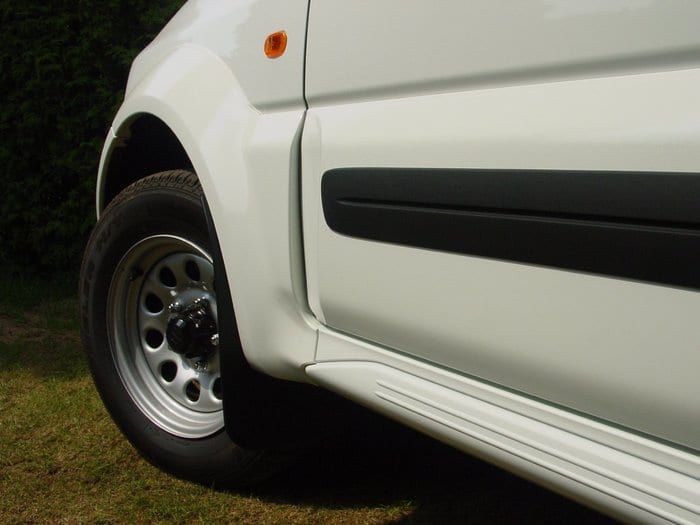
Car moldings and their markings
Content
Moldings in the automotive industry have been used for more than 70 years and perform not only a decorative function. About what moldings are, what is their purpose, how to choose and stick them on a car - read on.
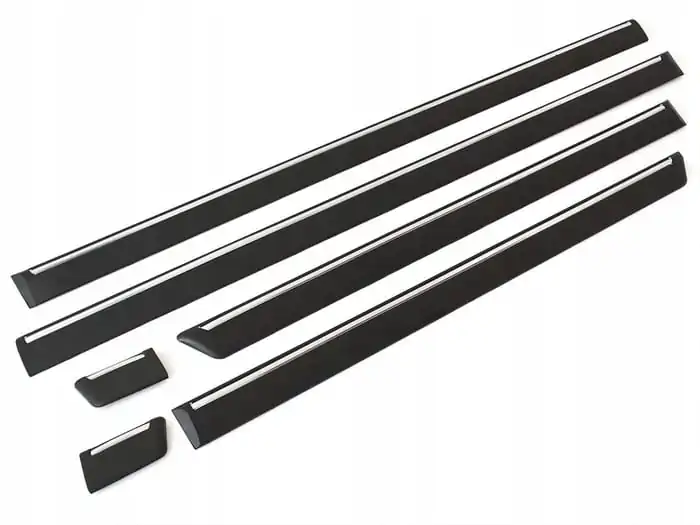
What is car molding
Molding is a decorative element of the body, which is a profiled strip of plastic, metal (chrome-plated) or hard rubber, which is located along the windows, the body and its elements. Moldings are installed regularly, and there are also universal bodies for protecting the paintwork, which are glued to obviously vulnerable places.
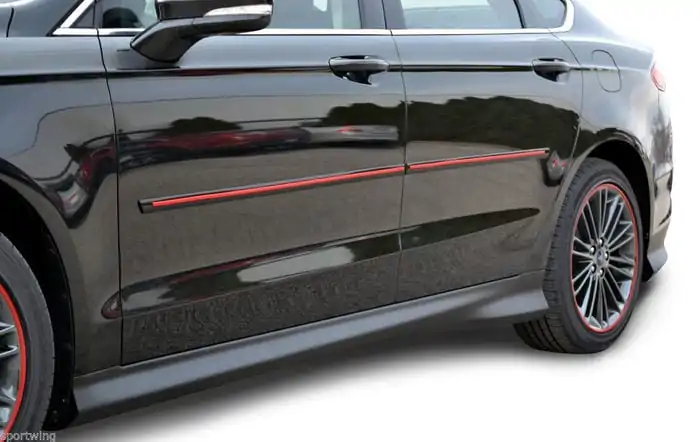
What is molding needed for?
Automotive molding has an aesthetic meaning, it is designed to cover places with increased interpanel clearance, as well as the gaps between the glass and the body, closing the gap filled with glue. The body protection function is performed by side moldings installed along the doors (middle and bottom), at the corner of the bumpers and along the threshold profile.
Features of moldings:
- glass - protects the interior and interior of the body from moisture and corrosion;
- on the bumper and fenders - protects these places from scratches, and also does not allow pieces of dirt to accumulate;
- on the doors - moldings in body color create an aesthetic effect of volume and streamlining of the body, they are made of plastic and fastened with clips. Paintless moldings protect the paint from scratches, which is especially useful when parking and a small distance between another car or other object. Also, this solution avoids the formation of dents;
- roofs - protect against moisture ingress and corrosion in drains, work as a water drain and also complement the composition of the roof design.
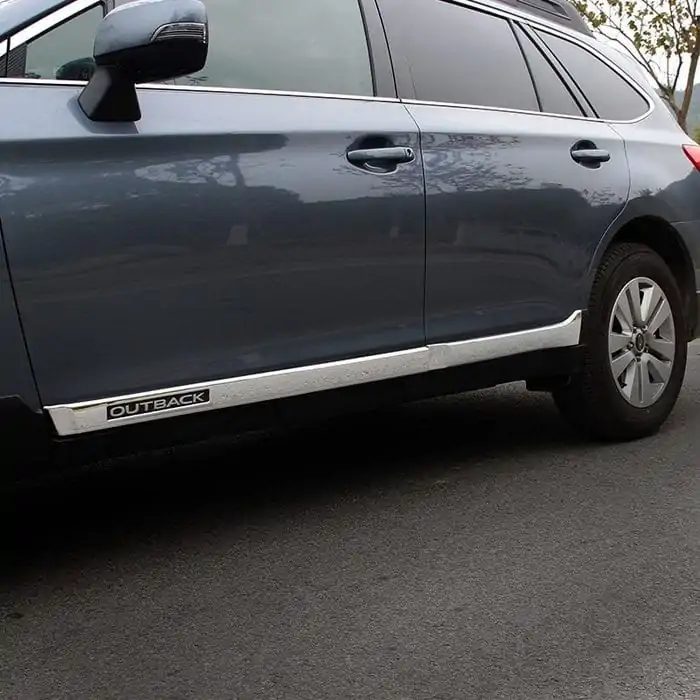
Types of convex trims on a car
If you decide to install additional moldings, you need to know the following types of trims, listed below.
Classification by the method of use and manufacture
- Consignment note - most of these options are made for installation on clips, significantly reducing installation time, however, there is a risk of poor fit to the plane, due to which dirt and moisture will clog into this cavity, which provoked corrosion.
- With a rain channel - in the inside of the lining there is a guide channel for draining water into the drain. This is a special molding for the windshield and rear window. Installed with clips only.
- The half-open bar is a monolithic U-shaped piece that protects the side of the body, closes the transition between the body panel and the glass, and also carries an aesthetic meaning.
- Universal. It can be installed on absolutely any car. Plus, such moldings at an affordable price are often self-adhesive. Often installed instead of the old molding because of the inability to install the same, and in other places not provided for by the design.
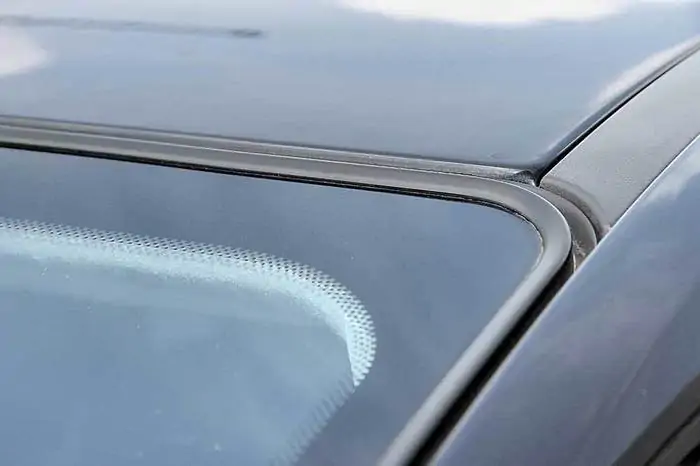
Classification by frame coverage
Moldings are divided into the following categories:
- four-sided - for windshields, is a monolithic part installed along the glass, about 4.5 meters in size;
- three-sided - also used for windshield, but due to installation difficulties in the area of \u3b\uXNUMXbmounting the wiper arms, the lower part is not provided. Average length XNUMX meters;
- side, lower and upper - are a separate piece of hard rubber, the lower and upper are used to seal the windshield with right angles, and the side ones are often plastic, sometimes they play a secondary role, creating an aerodynamic effect;
- combined - is a kit for simplified installation, provided for cases where it is impossible or difficult to install a monolithic sealant.
Generic instances
Such moldings are suitable for absolutely any car. They have different lengths, widths and shapes. Due to this, such decorative elements allow you to create a unique car design when performing visual tuning.
Universal moldings are often made of plastic, less often of metal. Most of the options are attached to the car with double-sided tape, but there is also a type of decorative elements that is attached with rivets or special plastic clips.
Universal moldings are cheaper than the original counterparts, due to which car owners are more willing to buy such kits. The disadvantage of such products is the low-quality material from which they are made. To make the product cheaper, manufacturers make it from a substitute for butyl rubber.
In some cases, car owners purchase building moldings to style a car. They are mainly made of aluminum and lend themselves well to additional processing (they can be deformed to fit the contour of the surface to be glued). If a professional is engaged in decorating a car, as a result of installing building moldings, the vehicle can look decent.
Marking
Each type of molding has its own marking. Firstly, these designations allow you to determine which part of the car these decorative elements are intended for. Secondly, by the symbols, the car owner can understand what material such parts are made of. Thanks to this, he understands what can be processed, for example, before painting or when cleaning from bitumen adhering to the body when driving in the summer on roads with poor quality asphalt.
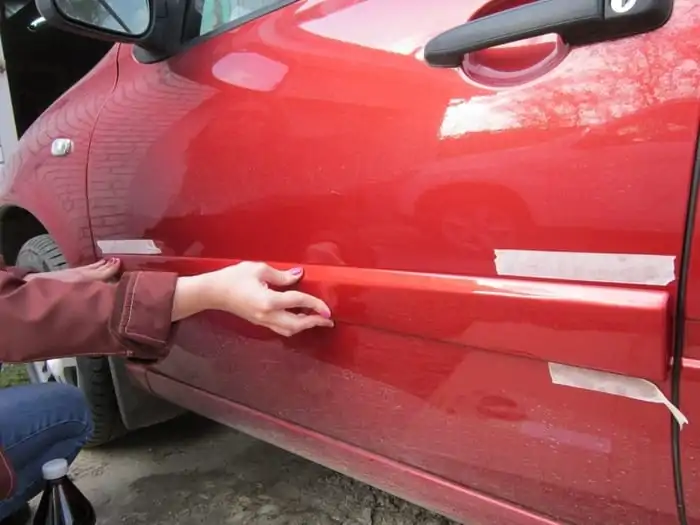
Abbreviation meanings
Since car moldings are made from different materials, each of them gets its own abbreviation, so you can determine which decorative element to install on your car.
Here is a common marking indicating the type of molding:
- PVC Mld - PVC production material or synthetic polymer;
- TPR - thermoplastic rubber;
- With Butyl Mld - the composition of the material from which the element is made includes butyl;
- EPDM - the composition of the material includes rubber and ethylene-propylene. This material is very sensitive to ultraviolet radiation, chemicals and strong temperature changes (-50 + 120 degrees);
- Cavity Mld - the shape of the product has a drainage system;
- Underside Mld - hidden molding (flush with the car body);
- With Detail Strip Mld - with a decorative strip;
- Encapsulation Mld is a factory molding that is produced together with glass for a specific car model.
Other classifications
In the auto parts and accessories market, you can often find black plastic moldings. They can be glossy or matte. More difficult, but possible, to find flexible moldings. The classification of these decorative elements is based on the installation location.
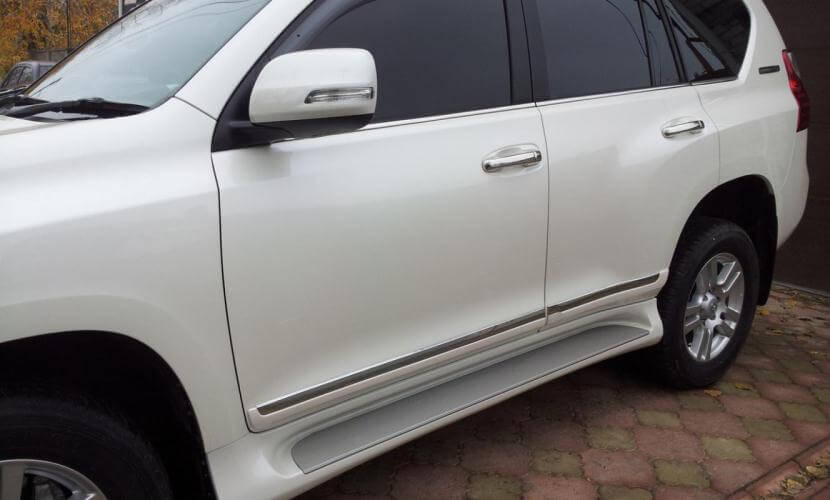
Here are the key categories of car moldings:
- Door. Basically, these elements are installed on the convex parts of the doors to protect against impacts. In addition to protecting the paintwork, such elements give the car originality.
- For bumpers. Such elements are made of plastic, less often of rubber. In addition to the stylistic purpose, they protect plastic bumpers from damage during minor impacts. Often, these moldings are made in the same style as the door options to complement the design of the car.
- For glasses. These moldings are mostly made of rubber so that they fit snugly against the glass. In addition to decorating the car, such elements provide additional protection against water ingress between the glass and the body.
- For the roof. These parts are installed in the roof gutters and can be the finishing touch to the overall styling of the moldings used on the car.
- For other body parts. Additionally, small parts can be installed on thresholds, wheel arches, fenders. In addition to the stylistic purpose, moldings of this category can be installed to protect the body from the impact of small stones while driving a car or chemicals that sprinkle the road in winter. But often such elements are installed by unscrupulous sellers to hide damage to the body paintwork.
What part of the car to put
Depending on the situation, the moldings are installed in the following places:
- the door. Typically, plastic strips are used just below the middle of the door, which is the most vulnerable to damage. Such moldings perfectly absorb small blows, protecting the paintwork;
- bumpers. They are mounted on the bumper by gluing, installation is carried out along the plastic buffer, making parking in tight places less dangerous for paintwork;
- glass. Instead, damaged parts are used to drain water, protect the glass, and mask the gap between the body panels.
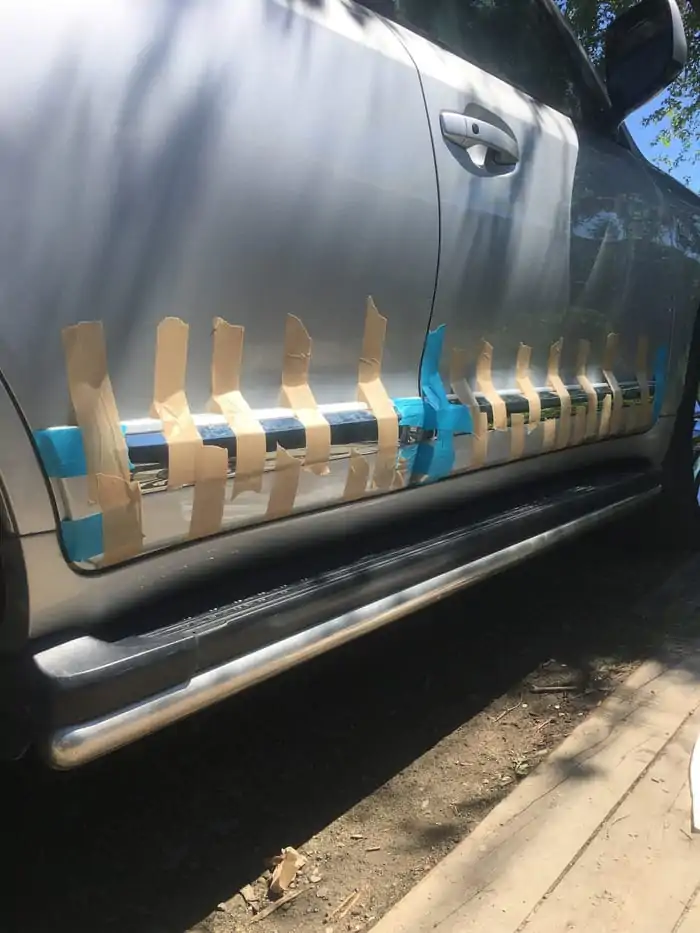
Dismantling
Dismantle moldings in several cases:
- When there is a desire to install a more beautiful version of the decorative element;
- If body rust has appeared under the molding;
- If a part of a decorative element is broken, for example, during an inaccurate wash or during an accident.
Some moldings can be restored by repainting them. But often these decorative elements are simply replaced with new ones. If you need to repaint the molding, then it is cleaned of dirt, the body is glued around the molding and a layer of paint is applied.
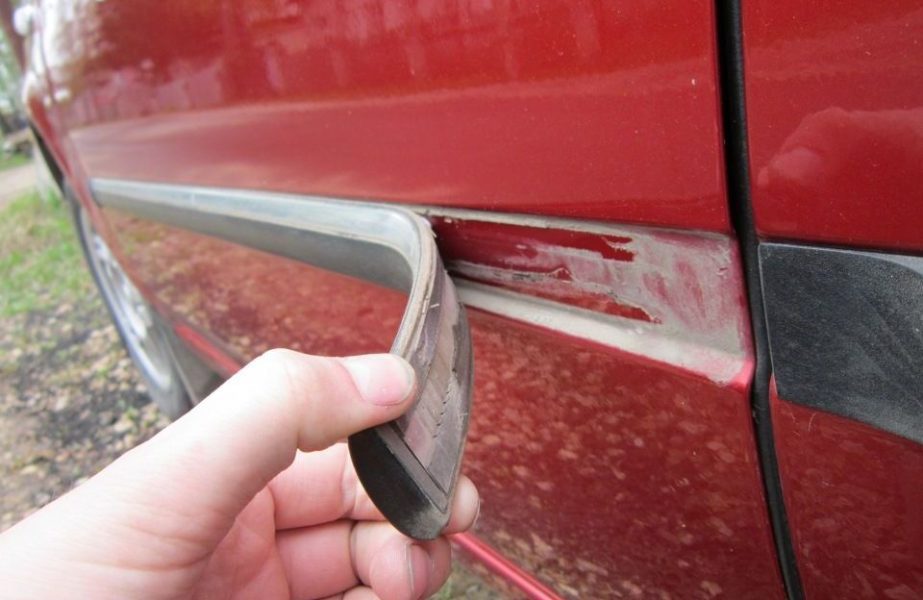
But if it is necessary to replace the decorative element with a new one, then first of all it is necessary to find out how they are fixed on the body. When using rivets (most often plastic plugs that are threaded through the bar and inserted directly into the hole in the body), they are cut off from the inside of the door or fender or simply broken off.
It is a little easier to remove moldings fixed with glue. They can be dismantled in two ways:
- With the help of heating. In order for the molding to peel off from the surface of the body, it must be heated with a household hair dryer. Construction, although it is better to cope with the heating of plastic, but it is more likely to damage the paintwork of the car. When heated, the molding is gradually pulled away from the surface.
- With the help of solvents. This method is used before repainting the car body if the old molding will be returned to its place. When processing the adhesive base with a solvent, you need to be careful not to damage the paintwork.
Cast part installation
To install a molded car molding, you must first prepare the surface. This is carried out by washing the area to be glued with foam, drying, and after degreasing. It is important to apply high-quality moldings, and choose those that have the most positive reviews.
How to glue a part
The following is a list of formulations that are recommended for gluing molded moldings:
- cyanoacrylic adhesive. One of the most effective means is a liquid adhesive tape, which is suitable for gluing parts on a metal and glass surface. It is important to avoid spilling on undesirable places, since it is extremely difficult to remove such glue;
- sealant for glasses. It can be used for other surfaces but with subsequent fixation with tape;
- liquid nail. Long-term pressing of the glued part to the surface is required;
- Double-sided tape. Suitable for gluing universal body moldings;
- glue-moment. Subject to the correct sequence, fixes glued parts for a long time.
Pros and cons of self-assembly
Due to the ease of installation, moldings can be installed on the machine yourself. Depending on the type of part and how it is secured, the job may require:
- Construction or household hair dryer;
- Screwdriver or drill with a nozzle, with which old adhesive tape will be removed;
- Means for degreasing the treated surface;
- Small spatula;
- Marker (it is important that it can be washed off - so there will be no traces of marking after pasting the moldings);
- Double-sided adhesive tape (if a factory fixer is used on the product, it is often not enough, and over time the molding will peel off) instead of the regular one;
- Clean rags to press the molding not with your fingers.
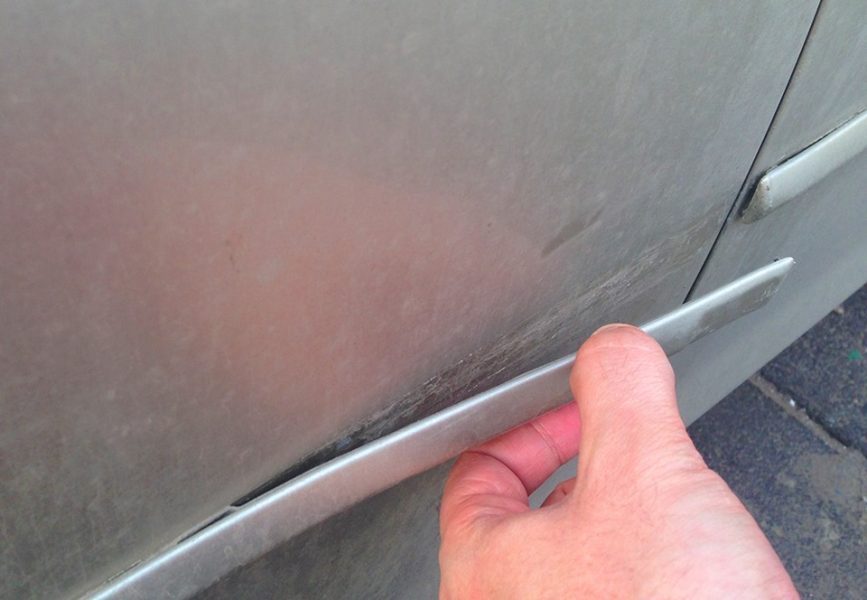
The key advantage of self-assembly of moldings is the low cost of the procedure. The car owner needs to spend money only for the purchase of decorative elements and adhesive tape. The rest of the tools and tools can be found at home (any home has a drill, spatula and alcohol for degreasing).
But with ease of installation, self-pasting moldings has several disadvantages. Careless dismantling of old elements can lead to damage to the paintwork. If corrosion has appeared under the paint, then the paint will peel off along with the molding. Such damage will definitely need to be repaired before installing a new decorative element.
Can the cargo protrude beyond the trailer body?
If we talk about oversized cargo, then each country may have its own restrictions and clarifications. So, in the territory of the CIS countries for the transportation of heavy loads there is a key rule: its weight should not exceed the carrying capacity indicated in the technical literature of the trailer or the car itself.
Individual transport has its own restrictions. If the car is a passenger car, then the load should protrude no more than one meter in front of the trailer, and 1.5 meters maximum in the back. The width of bulky cargo in this case should not be wider than 2.65m. In other cases, the cargo is considered oversized, and it must be transported by special vehicles, for example, a flatbed truck or a tractor.
Related videos
In conclusion - a short video on how to install the molding on the car:
Questions and answers:
What is car molding? It is a decorative piece that covers a body element such as fender flares or doors.
What is windshield molding? This is a drainage plastic element that can be fixed both on the windshield itself and under its seal.
Molding a car why? Literally from English, this expression is translated as molding. In a car, this element can perform both a decorative and a protective function (prevents rain drops from entering the passenger compartment through an open window).


One comment
john louis velazquez
I require a koleos 2009 windshield wiper grid, how much is it?